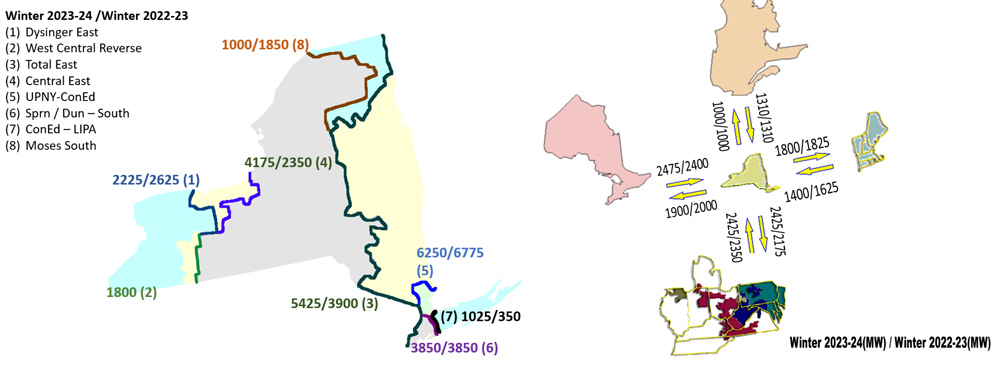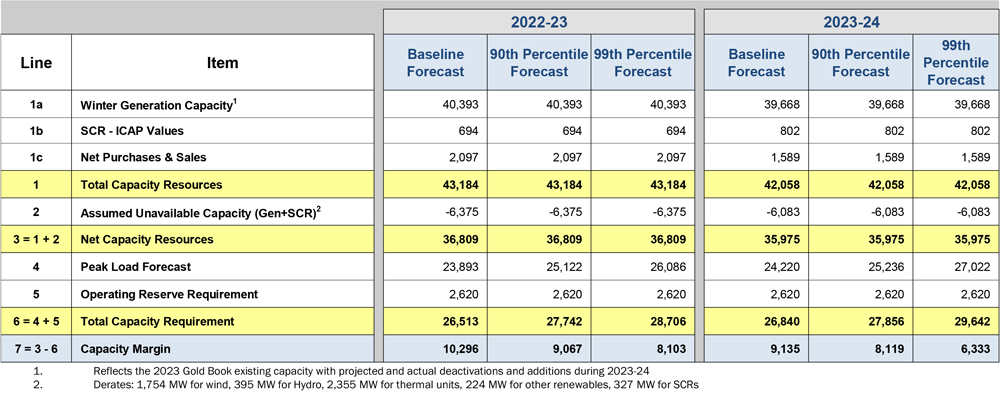ERCOT canceled its effort to procure additional generation capacity this winter Nov. 17, citing “limited response” from the market.
The Texas grid operator was seeking 3,000 MW of capacity with its request for proposal. Participants responded with 11.1 MW of “potentially eligible” capacity.
ERCOT CEO Pablo Vegas said Nov. 17 during an interview that it was “disappointing that there wasn’t more available.”
“One of the important outcomes of this RFP process was learning what the market response would be to this type of capacity request,” he said in a statement. “We’ll take these lessons and continue to work with the [Public Utility Commission of Texas] and the market to evaluate other types of demand response products that could contribute meaningfully to electric reliability in the future.”
The ISO announced its intention in October to increase operating reserves this winter. It listed 20 mothballed and seasonally mothballed dispatchable resources that were eligible to respond to the RFP. Austin Energy and CPS Energy, owners of three of the four largest plants on the list, have said they would not bring their decommissioned units back to life. (See ERCOT Searching for 3 GW of Winter Capacity.)
Talen Energy notified ERCOT in August that it was planning to indefinitely suspend operations at the other large plant on the list, its 292-MW gas unit outside Corpus Christi. The grid operator evaluated offering a reliability-must-run contract for Barney Davis before Talen withdrew the suspension request on Oct. 27. (See “ERCOT Evaluating RMR Options,” Texas Public Utility Commission Briefs: Aug. 24, 2023.)
Vegas said no generators offered their decommissioned units in response to the RFP, which presented three-month contracts that were to begin Dec. 1. The program’s 11.1 MW came from entities offering to shed load during emergency conditions.
The awards would have been announced Thursday.
The ISO said it weighed factors such as the program’s costs and the incremental additional complexity for its control room against the very small amount of capacity and the minimal reliability benefits in declining to proceed with the RFP.
“It will come as a surprise to no one that knows anything about power markets that ERCOT’s Hail Mary attempt to procure zombie power plants failed,” Stoic Energy CEO Doug Lewin said on X, formerly known as Twitter, putting in a plug for energy efficiency’s benefits.
The RFP also drew pushback from the PUC’s commissioners, who expressed concerns during an open meeting earlier this month over ERCOT’s refusal to place a firm cap on the program’s costs. Vegas told the commission staff had not yet set a budget for the RFP.
Commissioner Will McAdams said the RFP should be considered an interim or bridge solution under state rules. That would mean it would compete with funds under the $1 billion cap designated for the performance credit mechanism.
ERCOT said it “firmly believes” expanding demand response capabilities in the industrial, commercial and residential customer classes offers “tremendous potential.” It said it will work with the PUC and stakeholders to explore incentives and product designs that may work better in the future.
The RFP was based on probabilistic analysis indicating ERCOT faced a 20% risk of entering energy emergency alert conditions this winter if the system was hit with another event similar to last December’s Winter Storm Elliott. It said the 3,000 MW of additional capacity that could be called upon if needed was an “added layer of protection” during peak demand.
“The [RFP] was an extra layer of precaution to mitigate higher risk during extreme weather this winter,” Vegas said. “ERCOT is not projecting emergency conditions this winter and expects to have adequate resources to meet demand.”

